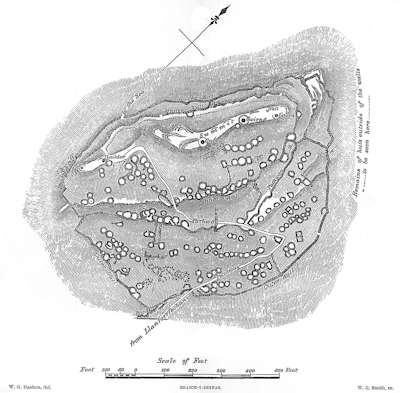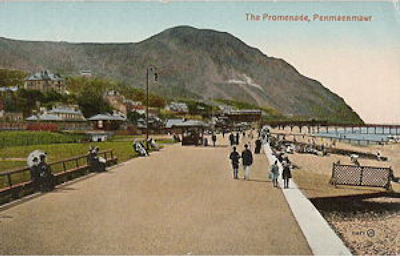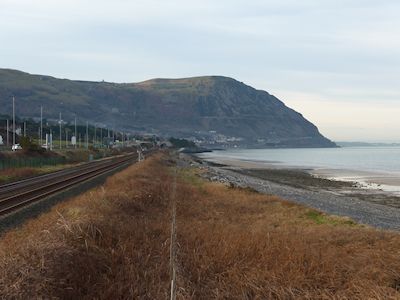

Braich y Dinas (Ridge of the Fort), once the best preserved and most complete hillfort in north-west Wales, completely disappeared in the first half of the 20th century. This was not the result of some Celtic magic but the effect of large-scale quarrying for granite, to which the village of Penmaenmawr mainly owes its existence, along with some Edwardian seaside trade. Early picture postcards compared with later show the gradual removal of the hill, which was once a very prominent landmark overlooking the coast (Figures C and D). Fortunately, the hillfort itself had been visited by many antiquarians who had photographed, surveyed and even carried out excavations. The earliest drawing of the fort is anonymous and undated but probably of 18th-century date. Although somewhat dramatised it nevertheless shows quite clearly details of the defences and houses as well as three cairns on the summit of the hill (Figure A). A plan made in 1877 shows over 100 houses on the eastern slope of the hill (Figure B) but another survey by Harold Hughes during the course of excavation in 1922 shows fewer houses, some perhaps having become unrecognisable by that time (Hughes 1922). The fort was approached by a zigzag track that would have made attack difficult and the entrances through the walls, which were some 3m high, were complemented by flanking buildings that probably functioned as guard chambers.

Hughes' excavations were limited to the interior of houses but numerous finds were obtained. The great majority of these belonged to the Roman period, including pottery and coins of the 1st to 2nd century AD. Most of the houses were small and conjoined and this is regarded as a Roman-period style for native settlement in this area, similar houses also being found at the hillfort of Tre'r Ceiri, Llŷn. However, there were also finds that showed pre-Roman occupation, including a considerable number of spindlewhorls, some of Iron Age type, and one piece of a late Iron Age bronze brooch. The cairns on the summit were probably Bronze Age burial mounds and a middle Bronze Age type of socketed and looped bronze spearhead was found during quarrying just outside the inner fort wall.

There are some odd features about this fort. For instance, there were numerous stone pebble tools but only one quern (for producing flour), although these are a common find from lowland settlement sites. This suggests that the fort's economy was based mainly on stock-raising and this interpretation accords with the large number of spindlewhorls found, indicating the availability of wool. These nearly all came from houses in the inner enclosure, whereas houses in the outer enclosure characteristically produced iron slag, showing some specialisation of function within the settlement. Although several forts in the north-west have produced Roman pottery and occasionally coins, these are typically of 2nd to 3rd century date. Braich y Dinas is the only one to have produced 1st-century pottery and coins and therefore possibly the only fort in the area to have remained occupied during the final Roman campaign of subjugation. It may therefore have had a special relationship with the military and not be a typical fort in terms of status or function. This view is supported by its apparent abandonment in the 2nd century, a time when a large portion of the Roman forces were withdrawn to fight elsewhere in Britain.

Internet Archaeology is an open access journal based in the Department of Archaeology, University of York. Except where otherwise noted, content from this work may be used under the terms of the Creative Commons Attribution 3.0 (CC BY) Unported licence, which permits unrestricted use, distribution, and reproduction in any medium, provided that attribution to the author(s), the title of the work, the Internet Archaeology journal and the relevant URL/DOI are given.
Terms and Conditions | Legal Statements | Privacy Policy | Cookies Policy | Citing Internet Archaeology
Internet Archaeology content is preserved for the long term with the Archaeology Data Service. Help sustain and support open access publication by donating to our Open Access Archaeology Fund.